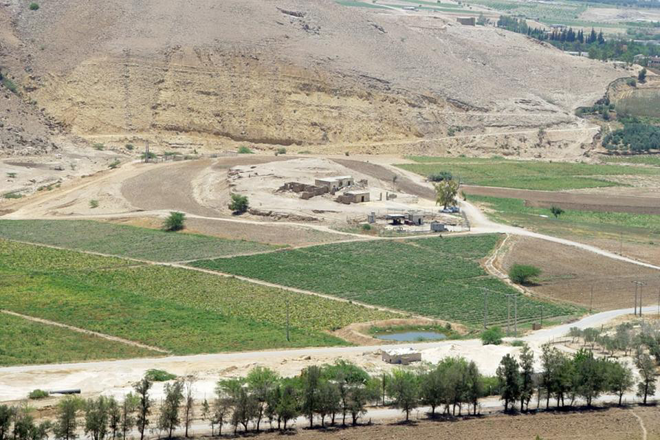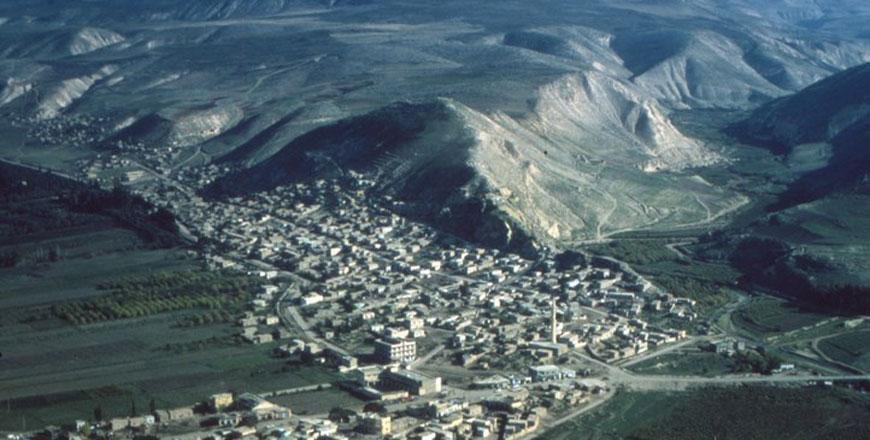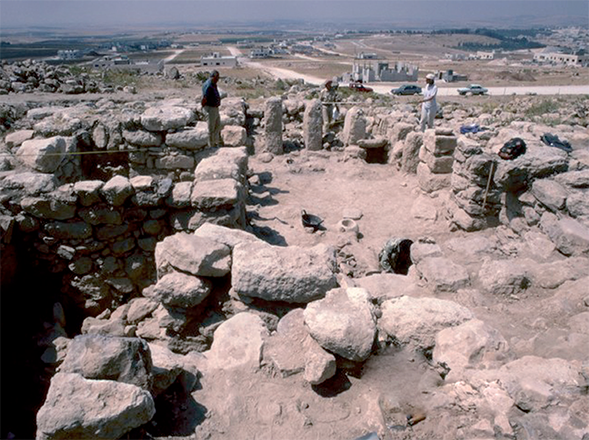You are here
Archaeologists investigate early craftsmanship at Tell Himmah
By Saeb Rawashdeh - Nov 06,2022 - Last updated at Nov 06,2022

A view of Tell Himmah site in the Jordan Valley (Photo courtesy of Yousef Zu’bi)
Activities of the ancient inhabitants of the Jordan Valley near the site of Tell Himmah (around 2.5 kilometres east of Tell Dayr’Alla) have long drawn the attention of archaeologists, who began excavating the area in 1996, a Jordanian archaeologist said in a recent interview with The Jordan Times.
“Eveline van der Steen [a Dutch scholar and a member of a Dutch-Jordanian team] has described how the main reason behind the decision to excavate at the site was to investigate the idea that a ‘trade market’ centered on the city-state of Saḥab was established on the Jordanian plateau during the Late Bronze Age. She also hypothesised that a trade route led from Tell Dayr ‘Alla in the Jordan Valley to Saḥab, by means of the Baq‘a basin, and that several sites – Tell Himmah amongst them — were established on the banks of Wadiaz-Zarqa,” underlined Professor Emeritus Zeidan Kafafi.
As a result of this small-scale excavation, a number of iron furnaces, thought to date to the 7th-8th centuries BC, and a large amount of slag were discovered, Kafafi said, adding that the excavators claimed that the archaeological remains recovered from Tell Himmah demonstrate that an iron production centre existed there.
In a later archaeological season, an assemblage of pottery vessels was found with these installations, the professor said. Due to the discrepancy between the dates found by the abovementioned studies, the excavators decided that further discussion of the Iron Age II vessels may help in attributing a more precise date to the iron production workshops at Tell Himmah, Kafafi said. In particular, this report will focus on surface treatment, ware, firing technique and form.
“Due to these results, Tell Himmah was acknowledged as a case —study for learning more about early iron-making technology and its social impact,” Kafafi said.
Archaeologists found pottery vessels, bowls, kraters, cooking pots, jugs, juglets and jars from floors of houses and a courtyard, Kafafi said, noting that these vessels were recovered in groups and may have been used by skillful craftsmen.
“A number of different types of bowls have been identified in the ceramic assemblage from Tell Himmah, including rounded bowls, which were separated in small bowls of approximately 15 cm in diameter; and medium and large deep bowls,” Kafafi said.
Cooking pots were also part of the assemblage. The studied examples “have no handles and are carinated under the rim; the triangular Iron I rim has developed into a ridge-form. Some are hole-mouth, while others are short-necked. Many are rounded in shape and some have a reddish brown slip”, Kafafi elaborated.
“This pottery could be radiocarbon dated to circa 930-850 BC and these were household vessels,” Kafafi highlighted.
Related Articles
AMMAN — Tell Shuneh Shamaliyyeh is located in the northern part of the eastern side of the Jordan Valley in Irbid Governorate. The Jord
AMMAN — Wadi Rum is a desert on the southern part of Jordan also known the Valley of Moon.
AMMAN — Tell Jawa is a relatively small site located south of Amman, near Yadouda, on the Airport Road.Tell Jawa was mainly occupied during


















